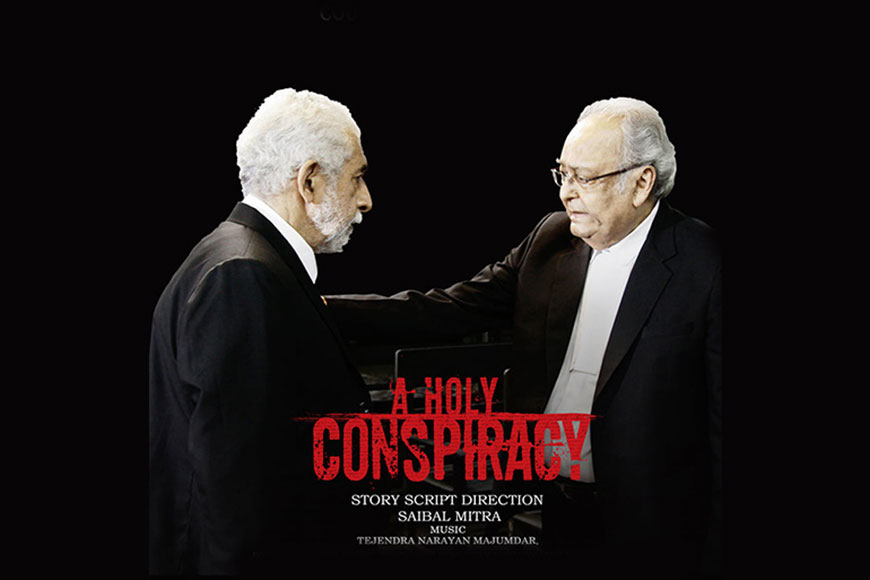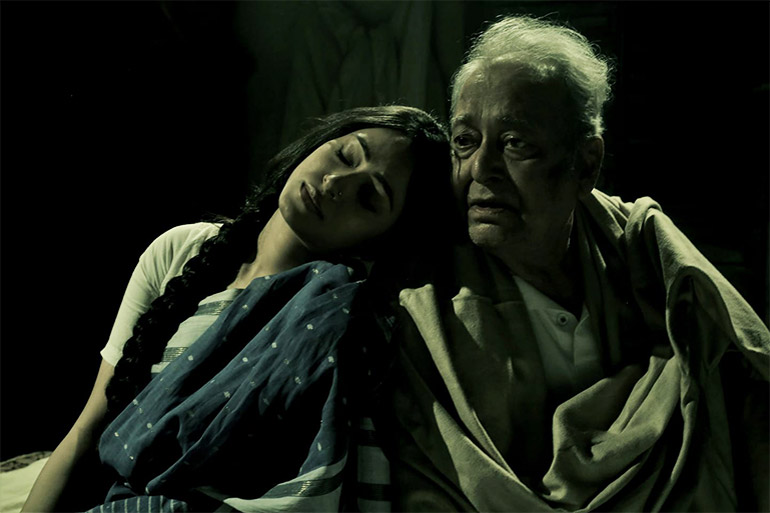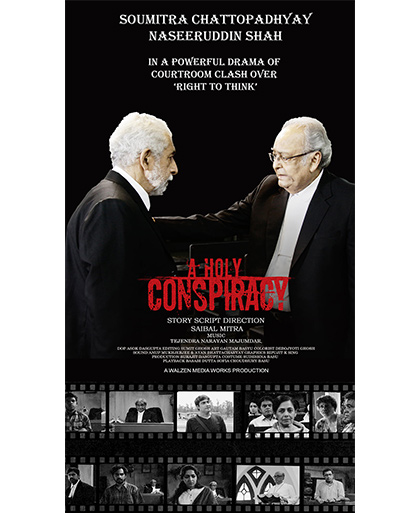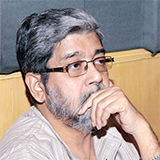The Soumitrada I knew

The first time I worked with Soumitrada was in 2007, while making a film for a television channel. The film was called ‘Dronacharya’, and alongside Soumitrada, it featured Dhritiman Chatterjee, Rudranil Ghosh, and Aparajita Ghosh Das. That was the first time I interacted with him, but it wasn’t as though this interaction progressed to intimacy. Rather, compared to many other directors, the distance between me and him remained. The foremost reason for this was my awareness of his elevated status. The other was my inherent aversion to what Bengalis call ‘adda’ (extended, wide-ranging conversations), so I didn’t really participate in Soumitrada’s ‘adda’ sessions on set. Besides, as director, I had my hands full trying to solve all the problems that crop up while shooting a film, so I couldn’t join in even if I wanted to.
 Tokhon Kuasha Chhilo
Tokhon Kuasha Chhilo
I never knew whether Soumitrada ultimately saw ‘Dronacharya’, but he may have heard about it, because when I met him again in 2016 for the making of ‘Tokhon Kuasha Chhilo’, he asked me about it. ‘Tokhon Kuasha Chhilo’ caused me to face several problems. Initially, we had decided to begin shooting in winter, but because Soumitrada’s dates had to match those of the rest of the cast, we could only begin in end-January of 2017. After only three days of filming, news came in from Kolkata of a horrific accident involving Soumitrada’s grandson Ranadeep, and his hospitalisation. As doctors began the battle to save his life, I had an opportunity to experience Soumitrada’s intense anxiety first hand. He had stopped working completely, and though I kept up with Ranadeep’s recovery process, I naturally didn’t contact Soumitrada about work.
The first time I worked with Soumitrada was in 2007, while making a film for a television channel. The film was called ‘Dronacharya’, and alongside Soumitrada, it featured Dhritiman Chatterjee, Rudranil Ghosh, and Aparajita Ghosh Das.Naturally, the shooting was postponed by a few months. As Ranadeep’s condition improved a little, Soumitrada gradually resumed work, but his anxiety and apprehension wouldn’t allow him to travel out of Kolkata to shoot, so we created a set in a city studio. As work progressed, I would notice that despite all his worries about his grandson, there was absolutely no sign of it when he was in a shot. Like a consummate professional, he was able to set aside all his personal distractions and focus on work. The film hasn’t released yet but when it does, you will see just how brilliant his acting was.
Next, as I prepared to begin work on ‘A Holy Conspiracy’, I got in touch with Soumitrada again. This time, the film was in English, and his co-star would be Naseeruddin Shah. The day I went to his home to tell him about the project, he seemed a little sceptical, but as he read the screenplay and then spoke to Naseer sahab, he grew increasingly more enthusiastic, though I was having sleepless nights trying to match the dates of the two superstars. Meanwhile, Soumitrada’s health was gradually declining, and I was beginning to wonder whether he would be able to start shooting at all.
On the other hand, Naseer sahab was extremely eager to work with Soumitrada. Every time we spoke on the phone, which was quite often, he would want to know how far the preparations had progressed. I would tell him everything except my worries about Soumitrada. I realised that the way things were going, though both actors were keen to work together, I would probably have to postpone the shooting owing to Soumitrada’s ill health, or even consider going ahead without him. And yet, there was nobody better suited to play the character in the entire Kolkata film industry.
Also read : A meeting on the 'Bridge'
I prepared to begin work on ‘A Holy Conspiracy’, I got in touch with Soumitrada again. This time, the film was in English, and his co-star would be Naseeruddin Shah.
There came a time when Soumitrada himself had begun to realise that given his health, he would probably not be able to take the stress of playing such a major character. Under the circumstances, it became difficult for me to insist that he continue, too. He actually began finding reasons to suggest that I postpone the shooting, but that would mean waiting another year in order to get dates from Naseer sahab. That worried the producers, since the shooting floor had been booked, and the set was being prepared. This made it almost impossible to stop shooting, and after much hesitation, I finally let Soumitrada know what the situation was. When he heard it all, he agreed to begin shooting, but we had to make every arrangement to accommodate his health problems. In any case, he was only working four hours a day, because he was too weak to do more.

Finally, the day arrived when we began shooting, and Naseer sahab arrived in Kolkata. The first time they met on the shooting floor, to our collective astonishment, they hugged each other, clearly over the moon with delight. I later learned that this was the culmination of a wish that they had both nurtured for a long time – to work together in a film, a wish I knew nothing about. Anyhow, this seemed to energise Soumitrada, who forgot all his physical problems and threw himself into his work. There was absolutely no way of knowing how ill he was inside.
That was Soumitrada. He repeatedly proved how he could forget all his woes as soon as he faced the camera. Nothing mattered then, neither the director, nor his own physical infirmities. He became the marvellous actor moulded by Sisir Bhaduri and Satyajit Ray, one who could permeate every corner of the shooting floor with the rhythm and music of his acting. It was as though he was paying homage to his gurus by saying, “Bondona more bhongite aaj songite biraje (the music of my movements is my tribute)”.
I bow my head.











